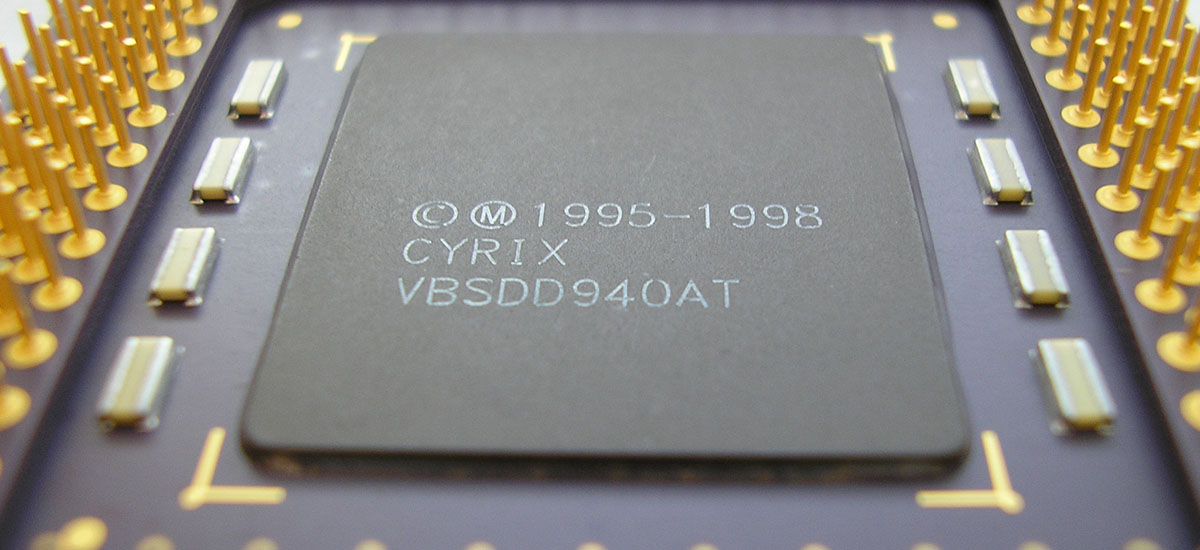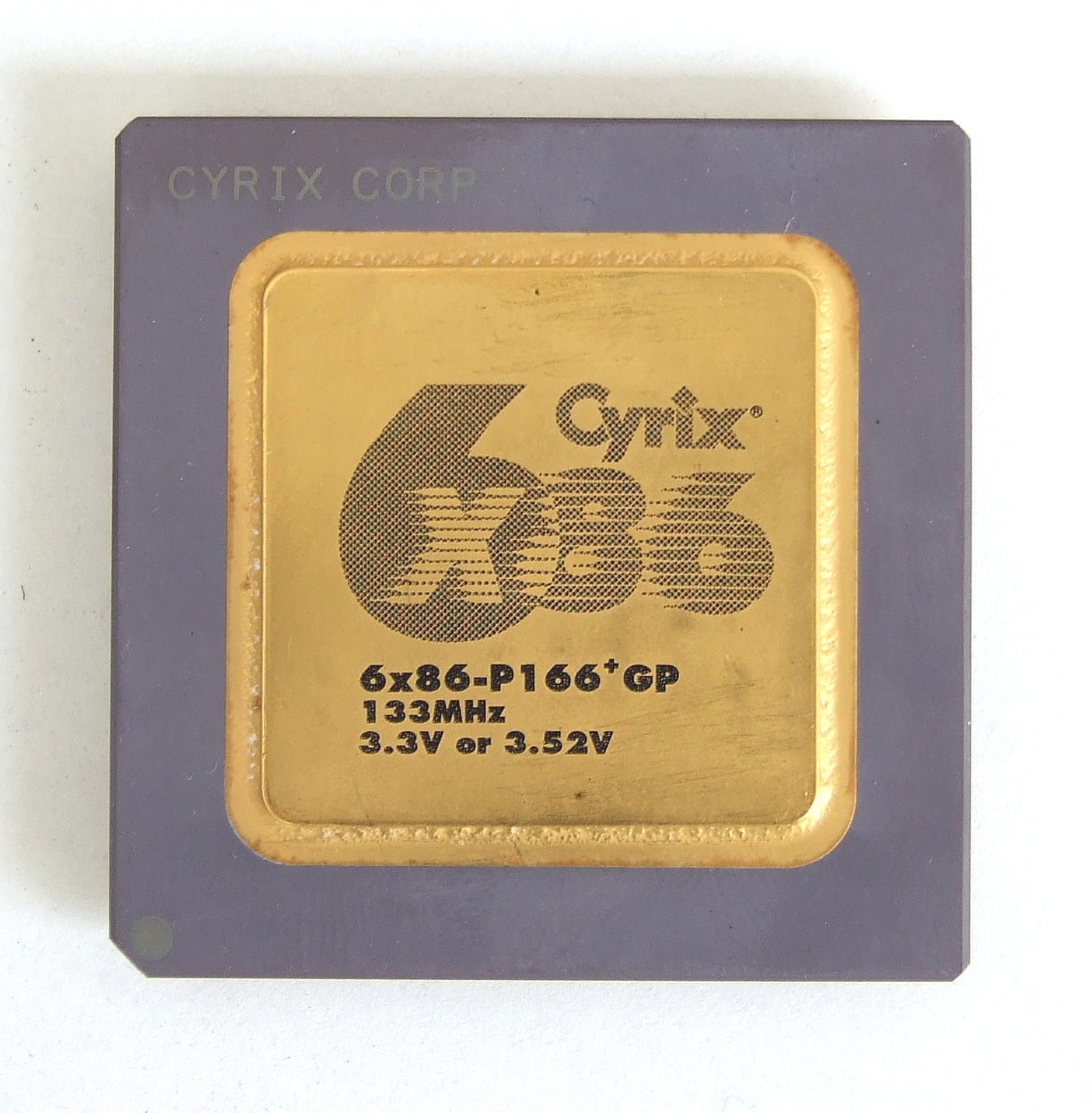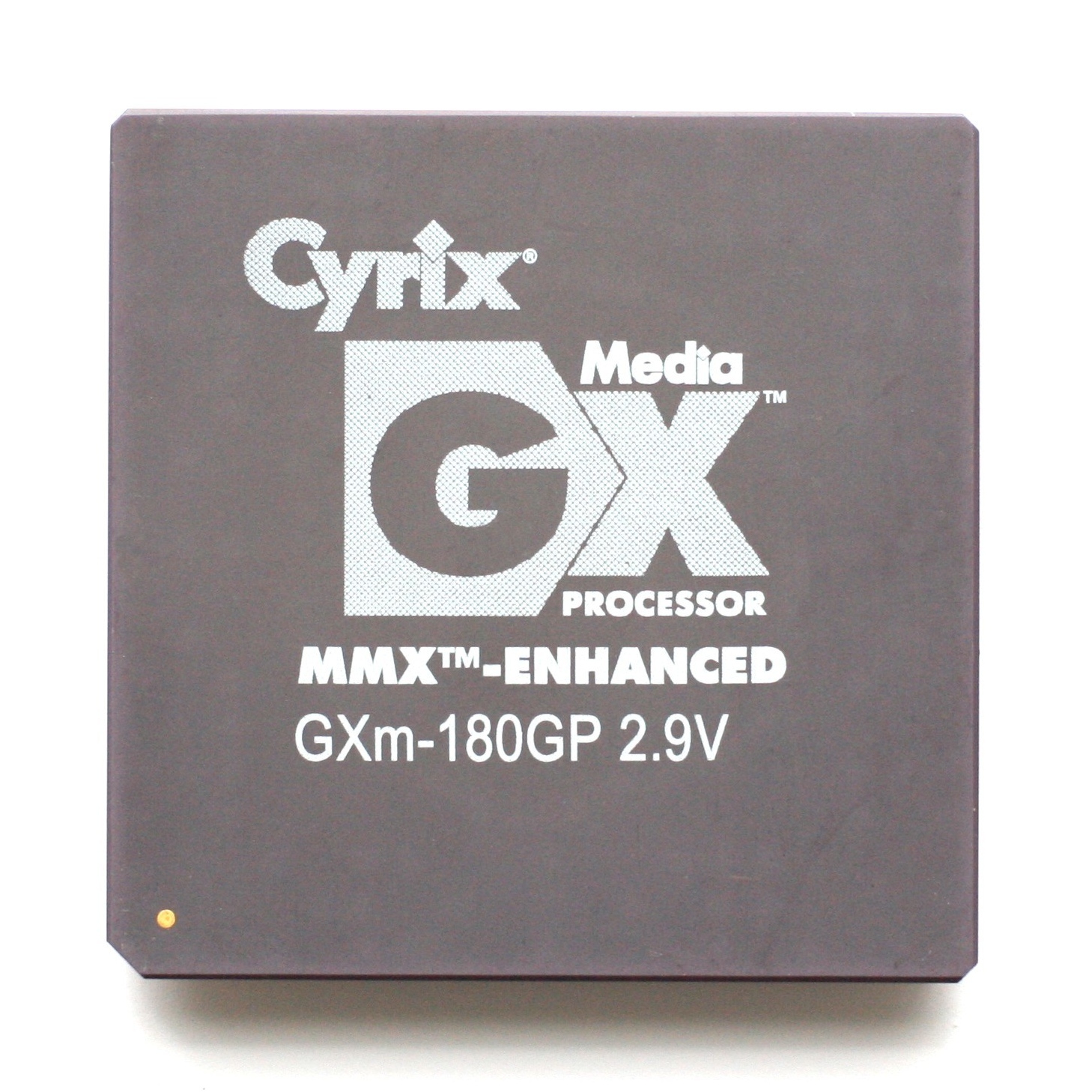These were times. When the concept of computer for thrifty was born, and Cyrix competed with Intel

From time immemorial, Intel has ruled the market for desktop processors. Compete with him in principle only AMD, which still uses the patents of the giant. Once, however, for a long time, there was a third company. Which had to annoy Intel's management badly.
The world of PCs and game consoles are ruled by x86-based processors. Although the ultra-mobile devices with ARM processors seem to be increasingly threatening the current leader, yet - even if - we are talking about a distant future. For now, Intel is in charge of this world, and AMD, who competes with it, uses its intellectual property (and Intel uses it from AMD, but it's a story for another day).
Meanwhile, when I started my adventure with a personal computer, you could choose between three processors. More specifically, between Intel, AMD and ... Cyrix. The last of the companies was quite unique. Not only was its layout compatible with the x86 architecture, but in many cases it was faster than the Intel counterparts at an attractive price. Also, and perhaps most of all, they did not use Intel's patents at all. To the great frustration of the latter.
The beginnings were modest, although they caught the industry's attention.
Cyrix Corporation was founded in 1988 in Richardson, Texas by Tom Brightman and Jerry Rogers. Initially, he employed 30 people. The company was to provide coprocessors for integrated circuits 286 and 386. Mr. Rogers, however, had higher ambitions.
The first Cyrix product to appear on the market was the x87 coprocessor for floating point calculations, compliant with the 386 layout. It appeared in 1989 in two varieties: FasMath 83D87 and 83S87. And he made a big impression, offering a 50 percent increase in performance relative to the Intel 808387 chipset. Cyrix also built the 82S87 coprocessor for 286 chips.
Cyrix had the idea of offering newer processors to the owners of old motherboards.
The most interesting, however, was yet to come. In 1992, Cyrix presented his first CPU. These were 486SLC and 486DLC systems. Despite the name, these processors were in formal terms compatible with the older generation systems. And so, respectively, 386SX and 386DX and with a suitable connector of this generation to the motherboard. However, these processors had a first-level cache, like 486, and supported a set of newer generation device instructions.

In other words, the 486SLC and 486DLC could be placed in the motherboards for the 386 processors and enjoy a much higher performance. Not at the level of 486 Intel chips, but noticeably higher than 386. With time, there were also 486SRX2 and 486DRX2 chips, which were clocked at twice the frequency of previous models. Less wealthy PC owners turned their attention to Cyrix. And this one was harvesting its success.
The company finally released a full-fledged version of 486 chips (they were called Cx486S and Cx486DX). They were a bit slower than the 486 chips from Intel and AMD, but they were cheaper. Unfortunately, for Cyrix, it was impossible to establish cooperation with any computer manufacturer. The processors were therefore available only on the market of self-assembling enthusiasts.
If the trick worked the first time, why not repeat it?
Intel got involved very intensely in the fight against Cyrix. Also in court, which we will come back to. However, the company had an advantage over its competitor, the Pentium processor. Much more efficient than 486 and has no counterpart at the competition, at least at the beginning. Unfortunately, demanding a new motherboard. Cyrix in 1995 re-used it.
Its Cx5x86 chip matched the 486 processor slot and was clocked, depending on the version, at a frequency of 80 MHz to 133 MHz. Its performance equaled the 75 MHz Pentium and was a 64-bit chip with 32-bit data bus. It is not difficult to guess that the system met with the sympathy of people who did not want to spend money on new motherboards.

However, the Pentium clone had to appear in the end. It was a legendary 6x86 chip that left Intel's counterparts behind. Its individual versions were even called confusingly in their own way - reflecting performance instead of technical parameters. For example, the Cx86 P166 + processor was faster than the Pentium 166 MHz, while being clocked at a lower frequency.
However, it was not a perfect processor. Pentiums from Intel included a more efficient coprocessor for floating point calculations, which was badly affected by the performance of games with 3D graphics. Such as Quake, who is extremely popular. 5x86, however, sold well, despite the lack of partners in the form of PC manufacturers. With time, there was also an energy-saving version of this system (6x86L) and such a supportive set of MMX instructions (6x86MX). Cyrix also introduced the Cyrix MII chip for sale to compete with Pentium II.
Everything was going well. Until merger with a larger, richer partner.
In 1996, the first SoC chip from Cyrix appeared. It was a 5x86 MediaGX layout that contained a CPU, GPU and sound card at 120 or 133 MHz. It was designed for the cheapest devices, and its versatility allowed Cyrix to finally find a partner. MediaGX systems were installed in the low-cost Compaqach Presario 2100 and 2200 and in Packard Bell computers. Later versions of the processor were clocked at 333 MHz and supported MMX instructions.
Cyrix, however, worked on efficient systems. The problem is that the company decided to seek financial support. She found them at the National Semiconductor, which she decided to combine. Cyrix thus gained enormous marketing and financial support and access to the production lines of its new owner.

Only National Semiconductor had slightly different ambitions from Cyrix. 6x86 and MII were to compete with the Intel chips, and the new owner thought it was a fatal strategy. So he put on mass production of cheap MediaGX. Efficient processors were "unwelcome" and treated in the company like rotten eggs. Such lack of support led to many problems in their construction: MII circuits were unstable on many motherboards and were not compatible with the popular Sound Blaster AWE sound cards. They also emitted very much heat and there was not a single reason to choose them over Intel or AMD chips.
National Semiconductor, instead of helping, has lost interest in the CPU market.
Despite Cyrix's huge influence on the market (it is believed that the Intel Celeron chips were designed mainly to be able to fight this particular competitor), Cyrix was basically abandoned, and the people employed in it ... were not even released. Suspended in a vacuum, one by one, they left the company. National Semiconductor has finally sold the resources and intellectual property of Cyrix to VIA and AMD. It was the end.
Cyrix's genius, however, was not just about creating a market for processors for the poor. On selling faster circuits for older computers. The company played on the nose not only to Intel sellers, but also to its lawyers.
Cyrix systems, although compatible with Intel's systems, did not use its intellectual property.
Instead, like AMD, to buy licenses for Intel patents, Cyrix decided to design its processors from scratch. Compatibility with x86 processors was obtained by proprietary solutions and so-called reverse engineering of competition systems. Of course, Intel had a different opinion. And he brought Cyrix a real judicial war. Which he lost.
Intel sued the competitor for theft of intellectual property, and to make life more difficult for him, he brought various cases in various courts and states. This tactic was aimed at violating the budget of a young competitor, which even worked ... initially. However, the whole battle ended with a settlement, as a result of which Intel had to pay Cyrix $ 12 million. for monopolistic practices.
Cyrix did not stop there. This time, he sued Intel, claiming that the Pentium Pro and Pentium II systems violate his patents. And ... he won, although he did not demand financial compensation from Intel. In return, the companies have signed an agreement under which they can mutually use their intellectual property.
Bad end, but the beginning was phenomenal.
Cyrix was an unusual company for people like me. Young sorrows, who had to beg their parents for pocket money to be able to save on the new processor. By Wing Commander and Doom they went smoothly. You could save on a whole new set of subassemblies with the motherboard, or buy for incomparably lower money Cyrix processor. Such as I was hundreds of thousands.
These were times when the concept of personal computer for thrifty was born. Certainly, Cyrix did not create this market, let's not go overboard. His role was, however, crucial here. And the genius of the company's engineers, who for a long time could recreate the market leader's systems in better versions, cheaper versions without using his inventions, deserves to be mentioned in such texts as the above one. Even if the last of Cyrix's layouts, unfortunately, they were no longer suitable.
These were times. When the concept of computer for thrifty was born, and Cyrix competed with Intel
Comments
Post a Comment